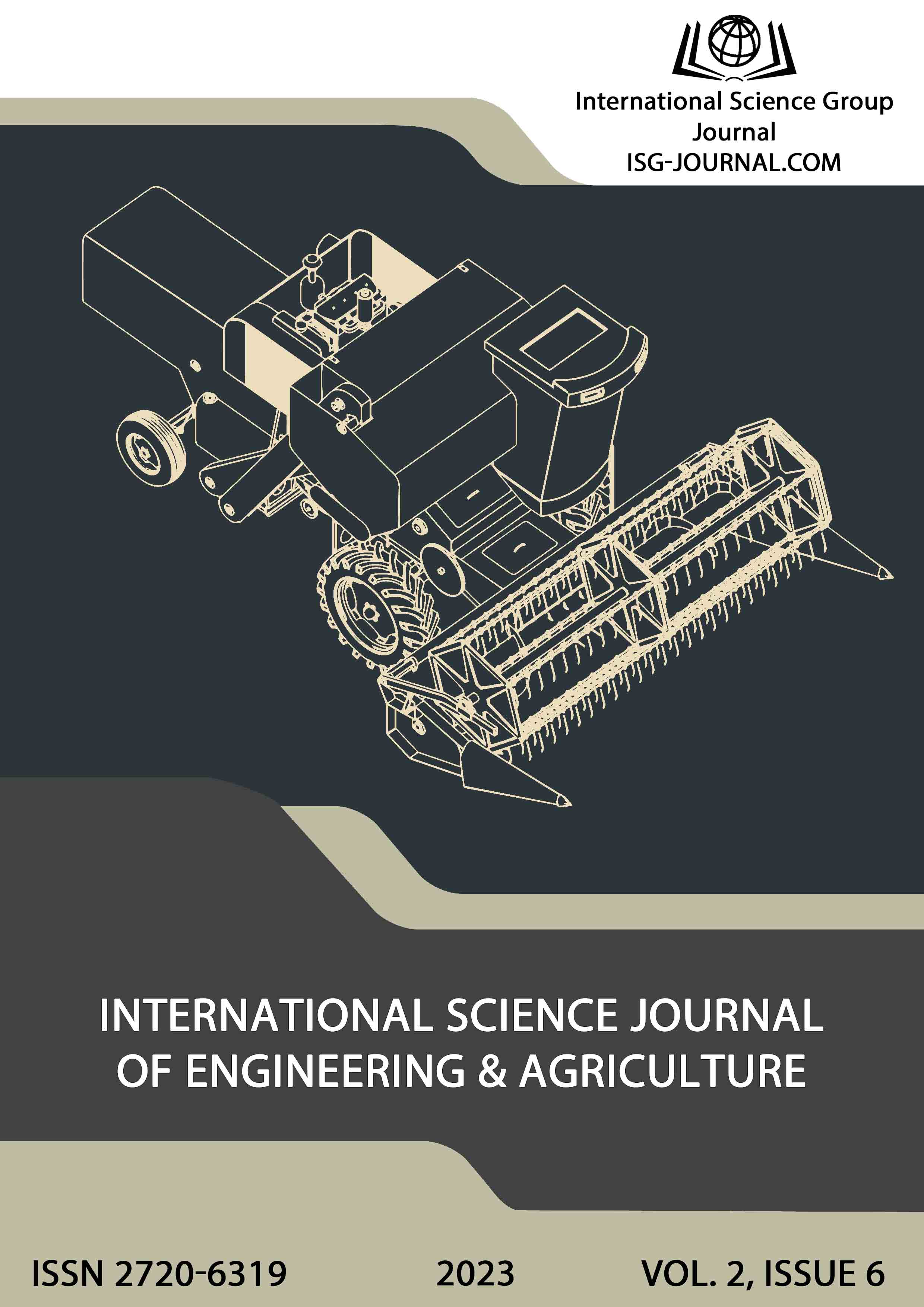Automation of the process of collecting and processing information on the emission-hazardous condition of household waste storage sites
DOI:
https://doi.org/10.46299/j.isjea.20230206.10Keywords:
automated control, municipal waste, landfill conditions, information systemsAbstract
Waste management has become an increasingly important issue in recent years. As the population has grown and consumption has increased, the amount of waste generated has also increased significantly. This has led to a growing need for effective waste management strategies, especially in the area of hazardous waste management. One of these strategies is the automation of collecting and processing information about the hazardous condition of landfills. Landfills are places where waste is disposed of and stored. These facilities can pose significant risks to the environment and human health if not managed properly. Hazardous waste, such as chemicals and toxic materials, can contaminate soil and water sources, leading to pollution and potential health hazards. It is therefore crucial to regularly monitor and assess the hazardous condition of landfills. Automation can significantly improve the efficiency and accuracy of this process. By using sensors and data collection devices, information about the hazardous condition of landfills can be collected in real time. This data can then be processed and analysed using modern algorithms and machine learning techniques. Such automation allows for faster and more accurate identification of potential hazards, which allows for prompt action to mitigate risks. In addition, automation can also simplify the reporting and documentation process. Automating the collection and processing of information significantly reduces the need for manual data entry and paperwork. This not only saves time and resources, but also minimises the risk of human error. Accurate and up-to-date information can be easily accessed and shared, which contributes to better decision-making and collaboration between stakeholders. Automating the collection and processing of information about the hazardous condition of landfills is therefore an important step towards effective waste management. Through the use of sensors, data collection devices and advanced algorithms, this process can be made more efficient and accurate. This automation not only improves the identification and mitigation of potential hazards, but also simplifies the reporting and documentation process. It is important that we use these technological advances to ensure that hazardous waste is managed properly and that the environment and human health are protected.References
Wojciechowska A, Kravchenko O, Melen-Zabramna O and Pankevych M 2019 The best European waste management practices (Lviv: Manuscript Company Publishing House) URL http://epl.org.ua/wp-content/uploads/2019/07/Krashchi_ES_praktuku_NET.pdf
Kovalenko V V, Radchenko O O, Kireikou A A, Stanishevskiy V Yu, Lahoiko A M and Sinitsky J. Problem of municipal solid waste of Ukraine and ways to solve it. // IOP Conf. Series: Earth and Environmental Science 1049 (2022) 012019, doi:10.1088/1755-1315/1049/1/012019
Chifari R, Sanchez V, Ventosa I, Guerrero T, Sommer G, Lopez M, Degueurce A, Thiriet P and Dargent E 2018 D6.1 – Methodology characterization of the biowaste management system in the DECISIVE demonstration sites: Current and new systems simulation for the LYON and CATALONIA cases Report 689229 European Union Horizon 2020 Brussels URL https://cutt.ly/kFXXjtw
Tymochko T 2019 Position of the all-ukrainian ecological league on the complex reclamation of solid waste landfills Waste management in Ukraine: legislation, economy, technologies: materials of the national forum. Svyatogorsk. November 7-8, 2019 (Kyiv: Tsentr ekolohichnoyi osvity ta infortatsiyi) pp 5–7 URL https://issuu.com/ecoleague/docs/-2019
Pinkevich N 2019 Administrative and Legal Regulation in the Field of Waste Management in Ukraine (Kyiv: State Research Institute of the Ministry of Internal Affairs of Ukraine)
Innovations in the field of waste management: experience and practice Proceedings of the scientific-practical conference, April 16, 2019 (Kyiv: National Pedagogical Dragomanov University) URL https://cutt.ly/VFXJDa0
Trontl K, Pevec D, Jaki´c I and Matijevi´c M 2020 Energy Policy 146 111804 URL https://www.sciencedirect.com/science/article/pii/S0301421520305231
Polishchuk N, Sakun L and Buriak I 2019 Market Infrastructure 37 494–499 URL http://www.market-infr.od.ua/journals/2019/37_2019_ukr/22.pdf
Kumar A and Verma S K 2022 Journal of Cleaner Production 343 130987 URL https://www.sciencedirect.com/science/article/pii/S0959652622006229
Vitvitsky E, Galaktionova E and Yuryeva N 2022 Transportation Research Procedia 61 185–190 URL https://www.sciencedirect.com/science/article/pii/S2352146522000370
Zhang Z, Zhang Y and Wu D 2019 Waste Management & Research 37 781–792 URL https://doi.org/10.1177/0734242X19855434
Morozova T 2021 Regional aspects of modeling for forecasting the generation of household waste Environmentally friendly technological solutions for local communities on waste management: Collection of materials of the National Forum “Waste Management in Ukraine: Legislation, Economy, Technology”, November 23-24, 2021)” (Kyiv: Tsentr ekolohichnoyi osvity ta infortatsiyi) pp 25–30 URL https: //cutt.ly/dFXVlTh
Savulyak V and Berezyuk O 2016 Technical support for the collection of transportation and preparation of solid waste (Vinnytsia: UNIVERSUM)
Nai C, Tang M, Liu Y, Xu Y, Dong L, Liu J and Huang Q 2021 Journal of Cleaner Production 286 125402 URLhttps://www.sciencedirect.com/science/article/pii/S0959652620354482
Mu’min G F, Prawisudha P, Zaini I N, Aziz M and Pasek A D 2017 Waste Management 67 106–120 URL https://www.sciencedirect.com/science/article/pii/S0956053X17303458
Управління та поводження з відходами. Частина 2. Тверді побутові відходи : навчальний посібник / Петрук В. Г., Васильківський І. В., Кватернюк С. М. та ін. – Вінниця : ВНТУ, 2015. – 100 с.
Правила експлуатації полігонів побутових відходів, затверджені наказом Міністерства з питань житлово-комунального господарства України № 435 від 01.12.2010 р.
ДСТУ 3911-99 Виявлення відходів і подання інформаційних даних про відходи. Загальні вимоги. – Київ : Держстандарт України, 2000. – 18 с.
Система космічного моніторингу за сміттєзвалищами твердих побутових відходів [Електронний ресурс] // O.S. Butenko, O.V. Barabfsh, S.I. Gorelik, A.A. Nikitin Системи управління, навігації та зв’язку. Збірник наукових праць. – Полтава: ПНТУ, 2018. – Режим доступу до ресурсу: http://journals.nupp.edu.ua/sunz/article/view/983.
Можливості використання технологій ГІС та ДЗЗ при екологічному моніторингу Макухівського сміттєзвалища в Полтавській області [Електронний ресурс] // № 2 (2022): Вісник Полтавської державної аграрної академії – Режим доступу до ресурсу: https://journals.pdaa.edu.ua/visnyk/article/view/1652.
Моніторинг, моделювання та прогнозування стану довкілля [Електронний ресурс] // Науково-технічний журнал № 1 (11), 2015р. – Режим доступу до ресурсу: https://core.ac.uk/download/pdf/73902175.pdf
Downloads
Published
How to Cite
Issue
Section
License
Copyright (c) 2023 Kostyantin Beglov, Viacheslav Mitiaiev

This work is licensed under a Creative Commons Attribution 4.0 International License.






